1. Introduction
The birth of agriculture has been a pivotal point in the settlement and development of human civilizations, and it has continuously undergone updates and upgrades in terms of agricultural productivity and production techniques. Currently, agriculture can be divided into four stages of development: the primitive stage, where the main production factors were labor and livestock, and production methods were simple; the stage of basic machinery, where advanced production factors like tractors were introduced; the stage of advanced machinery, where higher-level machinery such as combine harvesters, drones, and seeders became prevalent; and finally, the stage of intelligent production factors and techniques based on artificial intelligence (AI), big data, and blockchain technologies—of which AI is the core focus of this paper.
The definition of AI has evolved over the decades of its development, and currently, there is no unified consensus in the academic community regarding its definition, even for the term "intelligence" itself. However, AI can be broadly summarized as "artificially created entities that simulate the working structure of the human brain to respond to external stimuli." The concept of AI was proposed as early as the 1950s but only became feasible with the modern computer's computational power reaching its implementation threshold. AI, as an excellent tool for information processing, can solve various complex problems in areas such as traffic flow modeling, infectious disease modeling, fast style painting, and 3D scene generation, including the domain of agriculture. Agriculture, with its characteristics of heavy workload and monotonous tasks, is well-suited for the implementation of mechanization and automation products. Therefore, the development prospects of AI technology in agriculture are huge, as it can significantly reduce the additional costs associated with low-technology threshold through automation.
Currently, the application of AI technology in agriculture mainly focuses on two aspects:
Monitoring systems: This includes monitoring the growth environment, growth status of crops, and early warning of pests and diseases, providing relevant feedback based on models, and relying on a series of automated robots.
Expert systems: Traditional expert systems absorb and organize the experiences and expertise of domain experts regarding the problems encountered in the practical production and life of the field and provide suggestions based on simple if...else... logic decision trees. With the development of AI technology, expert systems can interpret and even "understand" the operation methods using neural networks, effectively enhancing the breadth and depth of problem responses.
In regions where big data technology and infrastructure are well-developed, people have greatly benefited from the blessings of artificial intelligence technology. Tasks that involve large computational workloads, repetitive operations, and some levels of logical complexity have been automated with artificial intelligence technology. However, due to the current situation of agriculture in our country, the process of informatization in agriculture still needs improvement, which has also led to a shortage of training data for artificial intelligence. Data collection, especially in remote areas, is weaker and more prone to vulnerabilities compared to areas with stronger informatization [1]. Additionally, due to the generally low education level of agricultural practitioners, the time and energy costs of learning artificial intelligence are also relatively high. In summary, due to low levels of informatization and poor knowledge dissemination, there is still a long way to go before the widespread use of artificial intelligence.
During the process of reviewing the literature, it was found that the number of relevant papers that simultaneously address agriculture and artificial intelligence is very scarce, much lower than papers focusing solely on artificial intelligence or agriculture. Moreover, there are very few recent research or review papers on related academic websites. This paper will provide a detailed description of the general application directions and specific use cases of artificial intelligence in practical production and daily life. It will also explain the current application barriers that are still being faced. The paper will extract and summarize recent development achievements.
2. Agricultural applications of artificial intelligence
When considering the application of artificial intelligence in agriculture, it can be categorized into two primary directions: monitoring systems and expert systems. These systems leverage artificial intelligence technology, along with agricultural expertise and experience, to deliver intelligent decision support for farmers and agricultural professionals. Both the monitoring system and expert system play crucial roles in the application of artificial intelligence in agriculture.
The monitoring system continually monitors and analyses farmland and crop data in real-time, providing up-to-date information on agricultural production and enabling farmers to make timely decisions. On the other hand, the expert system employs artificial intelligence technology to simulate agricultural experts' knowledge and experience, offering decision support to farmers and agricultural professionals. These two systems complement each other, with the monitoring system providing a comprehensive analysis of the current situation, and the expert system proposing appropriate solutions.
The implementation of these systems can significantly enhance the efficiency and quality of agricultural production, propelling the agricultural industry towards increased intelligence. Figure 1 simply shows the interaction between the field robot and the environment, as well as the analysis of the incoming data by the background robot
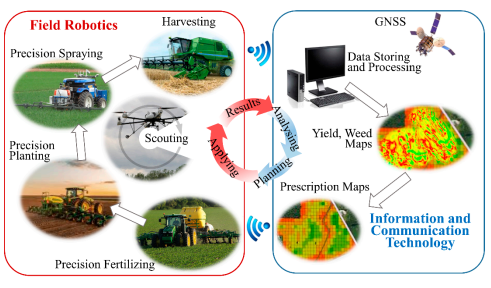
Figure 1. The interaction between the field robot and the environment, as well as the analysis of the incoming data by the background robot [2].
2.1. Monitoring system
A monitoring system is an application of artificial intelligence technology that enables real-time monitoring and analysis of farmland, crops, and the agricultural production environment. These systems employ sensors and image acquisition devices to gather data on soil moisture, temperature, light, crop growth, and pest conditions. Leveraging machine learning and deep learning algorithms, the monitoring system can analyze and model this data, delivering precise field and crop monitoring outcomes. By providing farmers with up-to-date agricultural production information, the system assists in making timely decisions regarding irrigation scheduling, fertilization programs, and pest control measures.
2.1.1. Soil monitoring. Soil, as an essential environmental factor for crop growth, contains various crucial growth elements such as inorganic salts, moisture, and pollutants, particularly harmful substances like heavy metals. Different crops have distinct requirements for soil indicators, necessitating soil testing and identification of suitable crops within designated areas before planting. Moreover, due to the slow energy flow and material circulation within farmland ecosystems, coupled with the dynamic nature of soil conditions, real-time monitoring of soil and appropriate fertilization or watering treatments are of paramount importance to maintain a favorable growth environment. Additionally, soil parameters are relatively easier to adjust compared to environmental factors like gas concentration and temperature.
Regarding the efficacy of soil pollution detection before crop growth, scholars suggest that the Improved Naive Bayes (INB) model outperforms the random forest model and the "XGBoost" model in predicting suspected polluted land [3]. However, it is worth noting that this paper's extensive reliance on model-based training data and the inherent characteristics of the INB model may lead to potential issues such as incomplete experimental results. The choice of an appropriate model depends on the specific problem and the characteristics of the dataset. The INB model is suitable for problems involving feature correlation, while the random forest model is well-suited for high-dimensional datasets with strong nonlinear relationships. The XGBoost model is more suitable for large datasets with complex feature relationships. When selecting the most suitable model for practical application, factors such as training time, parameter tuning, and the model's explanatory ability should be considered.
2.1.2. Pest monitoring. Pests and diseases have long posed significant challenges to the agriculture industry, impacting both crop production and livestock operations, thereby causing substantial economic losses for operators. Consequently, the development of relevant technologies to tackle this problem is of utmost importance.
Currently, a commonly adopted approach involves leveraging image recognition technology to independently identify diseases and pests, providing prompt feedback to managers. This technique is similar to most image recognition methods and has reached a high level of refinement. The prevailing method employs convolutional neural networks, which autonomously make decisions based on the analyzed images. Well-established solutions like the software "iNaturalist," available since 2008, have been widely used. In recent years, new products like "Palm Recognition King" have also emerged, enhancing the available options for pest and disease identification [4].

Figure 2. Construction process of knowledge map of pests and diseases [5].
Furthermore, in the realm of pest and disease prevention and knowledge-based responses, experts are developing expert systems that can be applied across a broader range of scenarios. For instance, in 2021, scholars at South China Normal University devised a question-and-answer system built upon a knowledge map of lychee and Longan pests and diseases. This system utilizes artificial intelligence technology to aggregate the knowledge reserves of relevant experts and popular science websites, integrating them into a user-friendly web-based interface. It effectively addresses specific queries by providing comprehensive answers based on real-world issues (Figure 2) [5]. This product embodies the notion of combining traditional expert systems with modern AI technologies, an idea further explored in Section 2.2 of this article.
2.1.3. Detection of plant growth status. The general concept of utilizing artificial intelligence technology to monitor crop growth involves detecting the plant's growth status, comparing it with predefined norms, and then determining the plant's growth situation.
However, as artificial intelligence continues to evolve, plant growth modeling has emerged, enabling the simulation of plant growth conditions based on given environmental parameters. This modeming approach allows for the prediction of the current period's growth potential. In 2003, Claudio O Stockle and other researchers published a paper in the European Journal of Agronomy, presenting an implementation method for this idea [6]. Similarly, in 2018, Academician Li Bohu published an article in the Journal of System Simulation, highlighting the specific applications of 3D modeling across various industries. Among them, the intelligent simulation of autonomous growth in virtual plants was mentioned. This technology compares the virtual growth model with the actual growth shape to detect whether the crop is growing healthily. When combined with other hardware, it increases the level of automation [7].
Moreover, in laboratory breeding operations, precise control can be achieved by simulating planting. Modeling techniques are particularly suitable for this application scenario as the laboratory environment is more controllable and aligns with the given functional limitations, making mathematical modeling of relevant parameters less challenging. Ideal modeling can also compensate for control problems caused by improper operations. However, this reliance on modeling poses a significant demand. If the modeming results are subpar, it can significantly impact the experimental outcomes. Nevertheless, despite these limitations, the potential of AI modeling for agricultural development remains substantial and undeniable.
2.2. Expert system
Traditional expert systems rely on the expertise and knowledge of field experts to absorb and organize potential problems that may arise in real-life production and daily activities. They often employ logical decision trees to provide solutions. With the advancement of artificial intelligence technology, one of its conceptions, called neuron network, has affected expert systems a lot so that expert systems can now interpret and even "understand" the functioning of neural networks. This integration enhances the breadth and depth of questions that can be answered.
In the book "Neural Network Expert Systems" published in 2006, the author defines the connection between neural networks and expert systems as follows recorded in the preface part:
An expert system mimics human expert reasoning based on knowledge and symbol processing, while neural networks simulate the human brain's cognitive processes using simple processing units called neurons. Both technologies aim to solve practical problems by imitating human thinking. While they excel in handling simple problems, they are inadequate for complex ones. Like human thinking, using only one mode is insufficient for complex problem-solving. Humans often combine logical and intuitive thinking for explanations. To achieve broader applications, expert systems, and neural networks must continuously develop and integrate, leveraging each other's strengths and compensating for weaknesses. This collaboration will lead to the creation of more powerful and practical artificial intelligence systems [8].
The author's corresponding analysis of the two engineering methods and two thinking modes is particularly refreshing, providing us with a deeper understanding of the relationship between neural networks and expert systems in the field of artificial intelligence. We should never forget machine learning has the flexibility to answer a wide range of questions but may encounter issues such as gradient disappearance, forgetting, or generating erroneous answers due to the complexity of neural networks [9-10]. So it is still necessary to promote the process of combining the two structures and making them better used. Figure 3 shows the compulsory expert system [11].
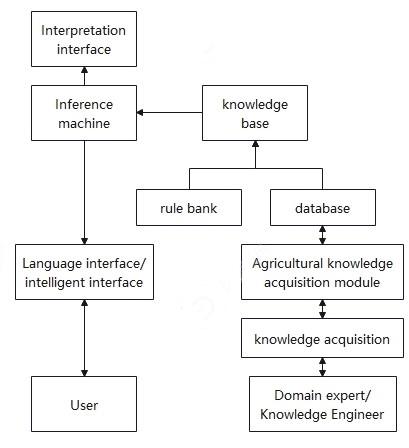
Figure 3. The compulsory expert system [11].
2.2.1. Basic agricultural expert system based on simple decision chain generation. The basic agricultural expert system based on decision chain theory is a rule-based artificial intelligence system designed to simulate the decision-making process of agricultural experts by presenting a series of decision problems to provide solutions to agricultural issues. For example, the relevant expert systems developed in China for rice cultivation effectively addressed the challenges faced by the rice industry at that time [12].
In specific use cases, expert systems can leverage the expertise of relevant field experts to offer constructive production suggestions even in the absence of professionals. Traditional expert systems make static decisions based on Monte Carlo trees, where the machine learns the decision boundaries through autonomous learning when presented with a judgment problem (Figure 4). This approach differs from machine learning as it dynamically trains the decision model by extracting abstract information from the dataset. Both methods have their strengths and weaknesses. Expert systems excel in accuracy and speed when responding to common questions but lack the flexibility to answer more complex queries.
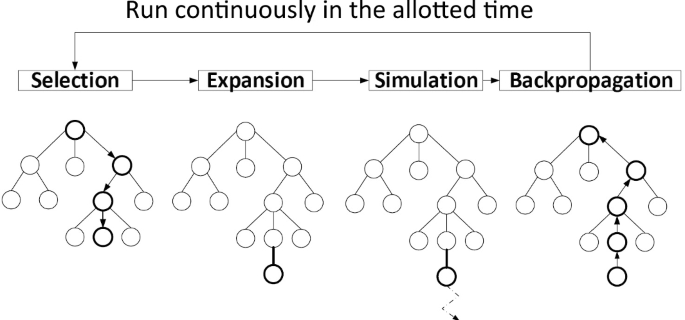
Figure 4. Basic logic of Monte Carlo trees [13].
Numerous related papers were published in the last century and early this century, but they quickly reached saturation because simple decision systems alone could not meet the needs of production and life, and the level of artificial intelligence had not reached a point where it could handle the diverse new problems arising from the modernization of the agricultural industry.
2.2.2. Agricultural expert system combined with the development of artificial intelligence technology. The neural network expert system combines the power of neural networks and expert systems in artificial intelligence (Figure 5). It harnesses the learning and adaptive capabilities of neural networks along with the reasoning and decision-making abilities of expert systems. Unlike simple Monte Carlo decision chains, this technology enables automatic knowledge acquisition, representation, reasoning, and updating. Classical algorithms such as backpropagation, neural fuzzy system, neural evolution, and neural network rule algorithms provide effective solutions for utilizing this tool to solve various problems.
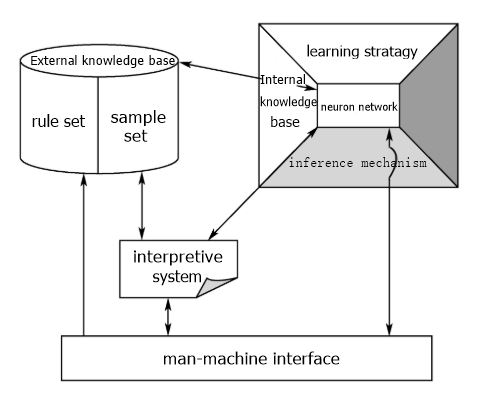
Figure 5. Neural network expert system structure [8].
The recently published literature has completed the topic of using an expert system to assess biodiversity in vegetable crop life cycle assessment through mathematical modeling.
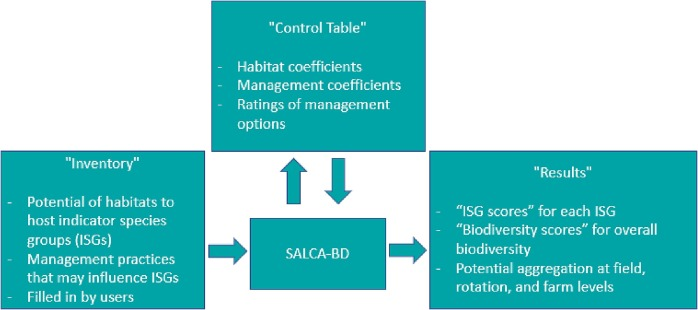
Figure 6. Engineering process [14].
In this study, the researchers focused on assessing biodiversity in vegetable crop life cycle using an expert system. They utilized SALCA-BD, an expert system originally designed for other agricultural aspects, and adapted it to the new application environment (Figure 6). The expert system served as a decision maker, evaluating the ecological level of the crop-growing area. It then determined the impact of different growth cycles of vegetables on biodiversity and provided guidance for subsequent planting. This highlights the expert system's ability to provide valuable guidance in agricultural settings [14].
3. Limitations of artificial intelligence in agriculture
3.1. Requirements for training models
Artificial intelligence models have a strong dependency on large-scale data. However, obtaining and organizing high-quality and reliable data in the agricultural sector can be challenging, particularly for remote agricultural industries. This limitation makes it difficult to acquire a sufficient quantity and quality of data required to effectively train AI models. To address this, it is crucial to enhance our data collection and organization capabilities to ensure we have adequate data to support AI applications in agriculture.
3.2. Scarcity of skilled professionals
There is a shortage of professionals with expertise in both AI and agriculture, which poses challenges to the development and application of AI technologies in the agricultural industry. To overcome this issue, it is essential to enhance the training of AI professionals in the agricultural domain. This can be achieved through the establishment of specialized education and training programs that foster a deeper understanding and utilization of artificial intelligence in agriculture. It is also valuable to encourage knowledge exchange and collaboration among experts in both fields.
3.3. Limited level of agricultural information technology
The agricultural industry is relatively traditional and lags in terms of information technology adoption. Many farmers may have limited exposure to AI technology, as well as the knowledge and skills required for data collection, processing, and analysis. Consequently, the implementation and utilization of artificial intelligence in agriculture face the challenge of low informatization levels. This obstacle can be addressed by providing training and support to farmers, helping them comprehend the potential benefits of AI technologies, and teaching them how to effectively apply these technologies in agricultural production.
4. Conclusion
This paper investigates the practical application of artificial intelligence in the agricultural sector, specifically focusing on the implementation of monitoring systems for soil, pests and diseases, plant growth, and decision-making expert systems involving artificial intelligence. The monitoring system utilizes advanced technologies such as sensor networks, drones, and satellite imagery to continuously monitor and analyze farmland and crop data in real time. This enables the provision of up-to-date information on agricultural production and assists farmers in making timely decisions. On the other hand, the expert system leverages artificial intelligence techniques to emulate the knowledge and experience of agricultural experts. By employing machine learning, deep learning, and inference engines, these systems accurately assess the condition of fields and crops, providing valuable decision support and recommendations for farmers and agricultural professionals.
Despite significant advancements in the application of AI in agriculture, several challenges still exist. These include issues related to data quality and availability, algorithm interpretability, and the acceptance of AI technologies by farmers. To further enhance the adoption of artificial intelligence in agriculture, it is crucial to focus on research and development in areas such as data acquisition and processing technology. Additionally, efforts should be made to improve the interpretability of algorithms and provide adequate training and education to farmers and agricultural professionals, enhancing their understanding and acceptance of AI technology.
In conclusion, the application of artificial intelligence in agriculture holds immense potential and offers promising prospects. The utilization of monitoring systems and expert systems can enhance the efficiency and quality of agricultural production, driving the industry towards increased intelligence. However, it is important to address the existing challenges to effectively leverage AI for sustainable development in agriculture.
References
[1]. Wang Hui, et al. "Research on methods of data collection and integration of agricultural resources in Xinjiang Production and Construction Corps." Journal of Agricultural Big Data 3.2 (2021): 31-41.
[2]. Gonzalez-de-Santos P, Fernández R, Sepúlveda D, Navas E, Emmi L, Armada M. Field Robots for Intelligent Farms—Inhering Features from Industry. Agronomy. 2020; 10(11):1638.
[3]. Lu Xiaosong, WANG Guoqing, LI Xu Zhi, DU Junyang, Sun Li. Application of site environment big data acquisition and machine learning methods in pollution intelligent identification. Journal of Ecology and Rural Environment, 2022, 38(9): 1101-1111.
[4]. Xie Chengjun, Liu Zhendong, Zhang Wei, et al. Mobile intelligent recognition system for pests and diseases based on big data for plant protection: Following Knowledge. Plant Doctor, 2020 (2):53-59.
[5]. Zheng Yongzhi, Wu Huilin, Zhu Dingju, et al. Question and answer system based on knowledge map of lychee and Longan pests. Computer and Digital Engineering, (2021)
[6]. Claudio O Stöckle, Marcello Donatelli, Roger Nelson. CropSyst, a cropping systems simulation model, European Journal of Agronomy (2003):3-4
[7]. Li Bohu, et al. Preliminary research on modeling and simulation techniques for novel artificial intelligence systems. Chinese Journal of System Simulation 30.2 (2018): 349.
[8]. Feng Ding. Neural network expert system. Science Press, 2006.
[9]. Alkaissi, Hussam, and Samy I. McFarlane. Artificial hallucinations in ChatGPT: implications in scientific writing. Cureus 15.2 (2023).
[10]. Beierle, Christoph, and Ingo J. Timm. Intentional forgetting: An emerging field in AI and beyond. KI-Künstliche Intelligenz 33 (2019): 5-8.
[11]. Yang Guoqiang, Wang Shuangxi, and Du Wei. Research progress of agricultural expert system in China. Journal of Shanxi Agricultural University 24.3 (2004): 303-305.
[12]. Yuan Chunxin, et al. Agricultural expert system and its application in rice cultivation. Southwest Agricultural Journal 16.4 (2003): 130-133.
[13]. Świechowski, Maciej, et al. Monte Carlo tree search: A review of recent modifications and applications. Artificial Intelligence Review 56.3 (2023): 2497-2562.
[14]. Antonin Pépin, Maria Vittoria Guidoboni, Philippe Jeanneret, Hayo M.G. van der Werf, Using an expert system to assess biodiversity in life cycle assessment of vegetable crops, Ecological Indicators, 148, (2023). 1470-160X
Cite this article
Niu,M. (2024). Application and existing problems of artificial intelligence technology in the agricultural field. Applied and Computational Engineering,35,32-40.
Data availability
The datasets used and/or analyzed during the current study will be available from the authors upon reasonable request.
Disclaimer/Publisher's Note
The statements, opinions and data contained in all publications are solely those of the individual author(s) and contributor(s) and not of EWA Publishing and/or the editor(s). EWA Publishing and/or the editor(s) disclaim responsibility for any injury to people or property resulting from any ideas, methods, instructions or products referred to in the content.
About volume
Volume title: Proceedings of the 2023 International Conference on Machine Learning and Automation
© 2024 by the author(s). Licensee EWA Publishing, Oxford, UK. This article is an open access article distributed under the terms and
conditions of the Creative Commons Attribution (CC BY) license. Authors who
publish this series agree to the following terms:
1. Authors retain copyright and grant the series right of first publication with the work simultaneously licensed under a Creative Commons
Attribution License that allows others to share the work with an acknowledgment of the work's authorship and initial publication in this
series.
2. Authors are able to enter into separate, additional contractual arrangements for the non-exclusive distribution of the series's published
version of the work (e.g., post it to an institutional repository or publish it in a book), with an acknowledgment of its initial
publication in this series.
3. Authors are permitted and encouraged to post their work online (e.g., in institutional repositories or on their website) prior to and
during the submission process, as it can lead to productive exchanges, as well as earlier and greater citation of published work (See
Open access policy for details).
References
[1]. Wang Hui, et al. "Research on methods of data collection and integration of agricultural resources in Xinjiang Production and Construction Corps." Journal of Agricultural Big Data 3.2 (2021): 31-41.
[2]. Gonzalez-de-Santos P, Fernández R, Sepúlveda D, Navas E, Emmi L, Armada M. Field Robots for Intelligent Farms—Inhering Features from Industry. Agronomy. 2020; 10(11):1638.
[3]. Lu Xiaosong, WANG Guoqing, LI Xu Zhi, DU Junyang, Sun Li. Application of site environment big data acquisition and machine learning methods in pollution intelligent identification. Journal of Ecology and Rural Environment, 2022, 38(9): 1101-1111.
[4]. Xie Chengjun, Liu Zhendong, Zhang Wei, et al. Mobile intelligent recognition system for pests and diseases based on big data for plant protection: Following Knowledge. Plant Doctor, 2020 (2):53-59.
[5]. Zheng Yongzhi, Wu Huilin, Zhu Dingju, et al. Question and answer system based on knowledge map of lychee and Longan pests. Computer and Digital Engineering, (2021)
[6]. Claudio O Stöckle, Marcello Donatelli, Roger Nelson. CropSyst, a cropping systems simulation model, European Journal of Agronomy (2003):3-4
[7]. Li Bohu, et al. Preliminary research on modeling and simulation techniques for novel artificial intelligence systems. Chinese Journal of System Simulation 30.2 (2018): 349.
[8]. Feng Ding. Neural network expert system. Science Press, 2006.
[9]. Alkaissi, Hussam, and Samy I. McFarlane. Artificial hallucinations in ChatGPT: implications in scientific writing. Cureus 15.2 (2023).
[10]. Beierle, Christoph, and Ingo J. Timm. Intentional forgetting: An emerging field in AI and beyond. KI-Künstliche Intelligenz 33 (2019): 5-8.
[11]. Yang Guoqiang, Wang Shuangxi, and Du Wei. Research progress of agricultural expert system in China. Journal of Shanxi Agricultural University 24.3 (2004): 303-305.
[12]. Yuan Chunxin, et al. Agricultural expert system and its application in rice cultivation. Southwest Agricultural Journal 16.4 (2003): 130-133.
[13]. Świechowski, Maciej, et al. Monte Carlo tree search: A review of recent modifications and applications. Artificial Intelligence Review 56.3 (2023): 2497-2562.
[14]. Antonin Pépin, Maria Vittoria Guidoboni, Philippe Jeanneret, Hayo M.G. van der Werf, Using an expert system to assess biodiversity in life cycle assessment of vegetable crops, Ecological Indicators, 148, (2023). 1470-160X









